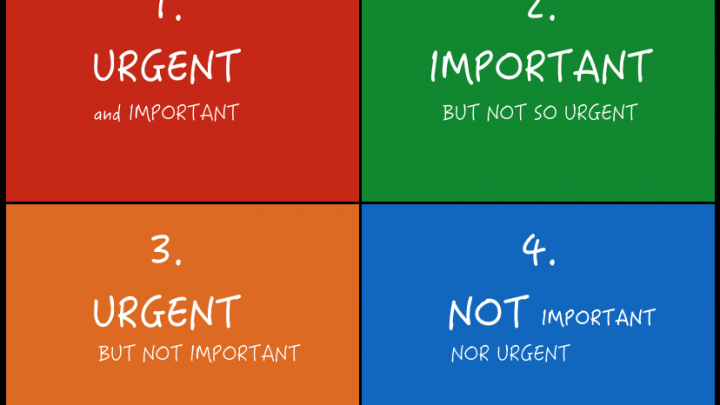1. BCG matrix
The BCG matrix or the growth share matrix is one of the most popular marketing strategy models, used to classify products as cows, dogs, stars and question marks. Based on the classification, the correct marketing strategy can be decided.
2. Ansoff Matrix
Deciding the future of your company and your products is always difficult. The Ansoff’s matrix helps marketing managers decide the future strategies which they can implement at product level or brand level as well.
3. GE-McKinsey matrix
If you want to analyse your business portfolio, or if you want to enter in a different industry altogether, then the GE McKinsey matrix helps you make the right decision through its 9 cell approach.
4. Porter’s five forces model
When you consider an existing industry, then there are five forces existing within that industry as per Michael Porter. These five forces vastly influence the players existing within that industry as well as the players trying to enter or exit from the industry
5. Gap analysis
There will always be gaps in an organization when your operations are in progress. If you want to improve your operations and expand your business, or you want to achieve any other objective, Gap analysis is the best marketing and strategy tool.
6. Product market expansion grid
A synonym to the Ansoff’s matrix, the product market expansion grid helps marketers decide whether to expand products, or expand market or to adopt an altogether different tactic.
7. Porter’s value chain
Most companies add value to their products through a nine step linear process which is known to be the value chain devised by Michael porter. The porter’s value chain is a very popular concept in the manufacturing as well as services industry.
8. Product life cycle
One of the most popular theory of marketing, the product life cycle theory explains the four stages through which a product goes in its life.
9. Pricing strategies
One of the most interesting topics of marketing and sales. Pricing is probably the most important P of the marketing mix today. How do your price your products or services? This article delves in 5 main and several smaller pricing strategies and tactics.
10. New product development
A new product involves a lot of investment in terms of time and money. But more importantly, it should turn out as per the market demand. Hence there is a seven step process for proper new product development.
11. Situation analysis
Any company trying to change things has to first undertake a situation analysis to understand where the company currently stands and accordingly, what steps it can take to improve its situation.
12. SWOT analysis
The top concept for internal analysis and analysing what the firm is doing right, and where it is going wrong. The SWOT analysis is one of the most widely applied concept of marketing. And it is so flexible that it can be used in personal life or for that matter any decision making as well.
13. Marketing mix
Understanding the marketing mix is at the crux of making any marketing plan or marketing strategy for the company. The marketing mix is the interaction point between your marketing efforts and the customer. And It is the most dynamic concept of marketing over time.
14. Service marketing mix
Services are very different from products mainly because of their intangible, heterogeneous and perishable nature. Hence the service marketing mix has 3 more P’s above and beyond the normal marketing mix.
15. Sustainable competitive advantage
Most companies devise a number of different strategies and plans, all because they can have a sustainable competitive advantage over competitors.
16. Competitor analysis
Before implementing any competitive strategy, you need to analyse your competition. This concept presents a 7 step process to analyse competition.
17. Competitive profile matrix
A most useful matrix used to design the complete competitive profile for an individual company. This matrix helps the firm take the right decisions based on competition and how it will respond.
18. Making a marketing strategy
How do you make a marketing strategy? It is by considering the 10 different factors mention in this article which help in the creation of long term as well as short term strategy.
19. Family Life cycle
How does a family decide which products it wants? And if you want to launch multiple products, how do you optimize the consumption? It is by observing the various stages of the family life cycle and accordingly thinking of launching the right products.
20. AIDAS Theory
The best theory of selling, the AIDAS theory explains how to rope customers in and how, in 5 stages, the lead can be converted from a prospect to a customer to a repeat customer.
21. PEST analysis
Whenever entering a new country or a different region altogether, there are several external business and environment factors which need to be considered to establish business. PEST analysis helps you with analysis of these factors.
22. PESTLE analysis
An extension of the PEST analysis, PESTLE analysis also considers the legal and environmental challenges.
23. SMART objectives
How do you define your goal and objectives? It is by using the SMART objectives method. It is a productivity concept most useful for marketing managers.
24. Consumer decision making
This article explains the seven steps of consumer decision making in great detail. The concept of consumer buying behaviour is at the heart of marketing.
25. Values attitudes and lifestyle
Consumer decision making is a tough science for marketers and a lot of decisions are made on the basis of Values, attitudes and lifestyle of people.
26. Activities interests and opinions (AIO)
Similar to the above concept, Attention, Interest and Desire are three important intangible elements of customer buying behaviour.
27. Customer satisfaction levels
Customer satisfaction and delight is something which each marketer strives for. So it is important that the marketer knows about the five types of customer satisfaction levels.
28. Product adoption
How does a customer adopt a product? Or how are different products adopted based on the product life cycle? The same can be explained by the product adoption concept.
29. Diffusion of Innovation
Innovative products generally hang in a balance because if they are not accepted in the market, then they fail. Thus, the study of diffusion of innovation is important when launching an innovative product.
30. Value chain analysis
Porter’s value chain explains how value is added to a product from the start to the end of the production cycle. Value chain analysis is a 9 step analytical process on how to add value to the chain.








